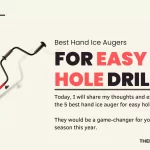To me catching a fish is like accomplishing a short-term life goal. It provides me with strength and motivation. Fishing in cold weather is a challenge itself at the same time sustaining too. But as they say, the more challenges the more interesting it gets. So, get ready, I would share with you my ice fishing secret tips and tricks that I have learned so far.
If you are a beginner, keep this in mind: fishing in icy water is the opposite of usual fishing. Therefore, I am going to throw my top 5 fishing tips and techniques, that would help you to do fishing on the ice like a pro. If you already have some experience, still it will surely aid in making your experience on the hard water far easier and more efficient.
Contents
Safety Precautions are crucial:
Before starting your ice fishing journey, make sure you are fully equipped for it. Look for proper boots, pinafores, and other safety apparel to ensure safety in any unforeseen circumstance. Set small targets for yourself, never jump over to the big fishes in the beginning as this would avoid accidents.
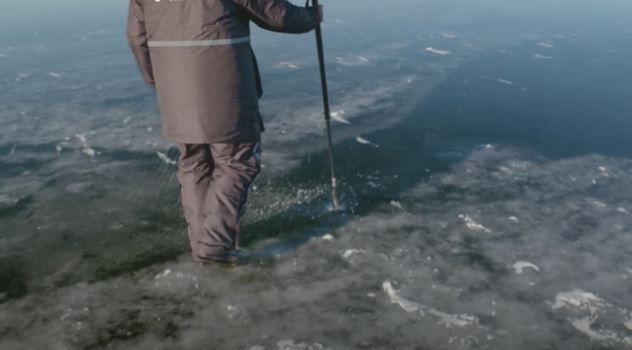
Go step by step towards your target. Play safe and stick to one technique at a time until you excel at it. This would keep you sorted and help you in the long run.
Icy species are dormant:
Before starting your angling, it’s good to acquire knowledge of the readily available species. The common species found worldwide in this season are edible including yellow perch, sunfish, largemouth bass, crappie, walleye, and trout. Now you decide what you want to catch!
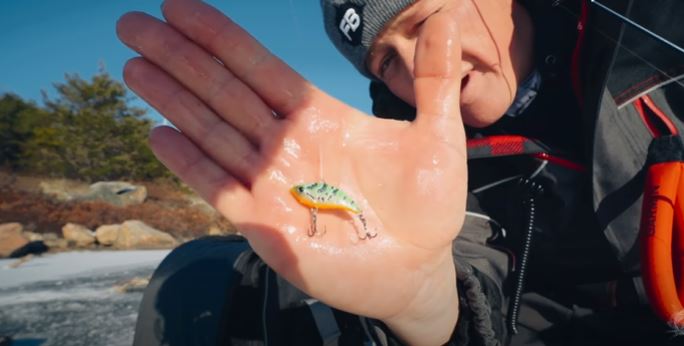
Discover Fresh weeds:
The winter days make the activity of the fishes slower and they are more lethargic as compared to usual summer days. Other factors that play a key role in this are improper light conditions. The above-mentioned factors impact the behavior of the fishes in winters.
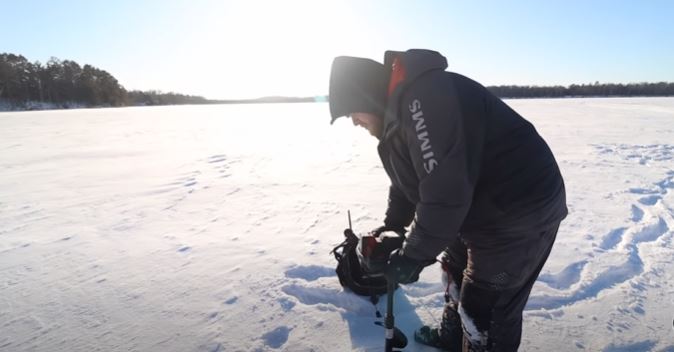
Whenever you are planning to fish somewhere it’s crucial to dig a hole. If you feel it’s not very fresh and has a stale rotting smell to it, abandon that spot right away. Hunt for some other place where you can spot beautiful fresh green weeds. Because it’s the fishes favorite place to be, they have easy access to food and shelter there. Doing this can help you get more fish.
It is more likely to spot fishes in those areas, where the green life is not compromised because fishes too need oxygen directly and indirectly from the weeds. So, remember the greener the place, the more the fish.
Depth of the water will decide your fate:
Another point to focus on while fishing is the depth of water. It’s always assumed to start hunting in the deepest spots first if you are looking for some big species, here we mean up to 20 feet deep. If it’s too much for you, you can always try your luck in shallow waters, like 3 feet deep.
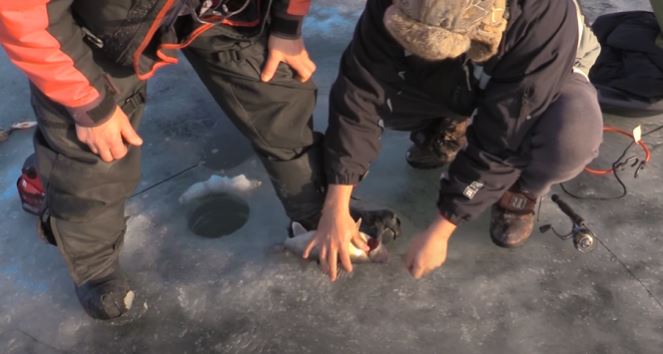
It’s a common myth that due to winter fishes are so exhausted and don’t even make an effort for food. But that is the half-truth, winters do slow down their activity, but fishes need food to survive. Shallow waters are the best spots for angling in this season.
Oxygen levels will ensure a difference:
In frosty winters due to ice, it is hard for the fish to get enough oxygen in the deep waters . Because the sun rays can’t even reach the bottom of the water to support the weed life. No vegetation means lesser oxygen. Thus the fishes have no choice but to swim up to the water surface for their survival.
Therefore, the bottom of the sea is not always the right place for ice fishing, instead, try the opposite.
Be wise and choose the Prime ice fishing spots:
Drop-offs are the fish’s favorite spots, another area could be where there is enough weed growth, as it’s the best location for them, where they have easy access to food. And if a location has to offer both weeds and steep drop off, then you have hit a jackpot! it’s the best spot to start angling.
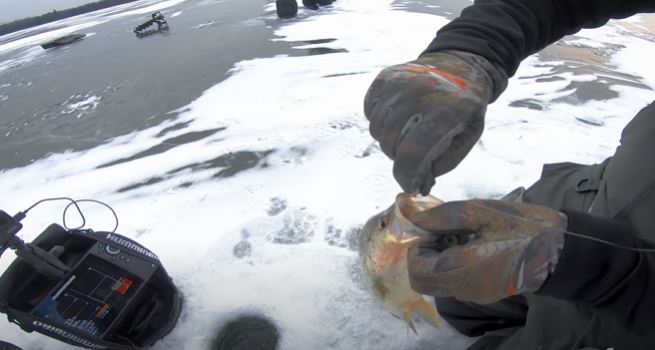
Investigate Underwater Hills:
Fishes are more likely to stay near the spots which physically look like drop-offs, like a hill, hump, or some Dipped Island. A place where sun radiation can easily reach for photosynthesis which would result in good vegetation and oxygen too.
Words for thought: Ideas to ponder on:
>> Ice angling can be easily done in 3-20 feet deep water.
>> The best spots for fishing could be humps, hills, and some sub-merged islands.
>> Fishes are more likely to be on the water surface due to depleting oxygen situation at the bottom.
>> Fishes are more likely to be found in areas where the light conditions are brighter and proper vegetation could be found.
>> When ice fishing, always begin with low bottom or small shallow lakes. They are likely to have lush green weeds, which is a green signal for the presence of healthy fishes.
Give them the homely vibes and trick them:
To catch your prey, smell and environment play a significant role. Here I am talking about attracting those beautiful fishes, they can easily be intimated by some wax worms in the water hole you are working on, or by simply dropping some small fry in your holes.
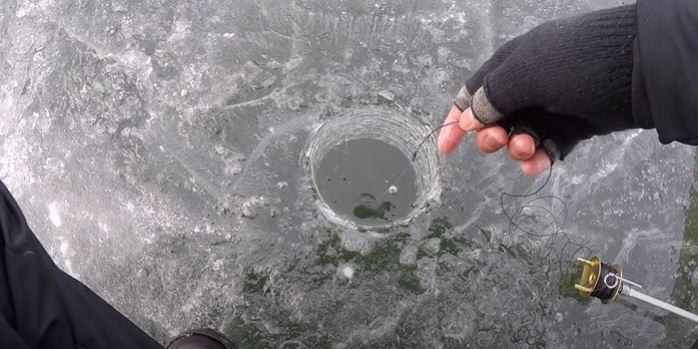
This treat would make them feel at home and the smell could easily trick them to get back in action to hunt their prey. This is what you exactly want fishes coming up to feed and dam you grab them. Spoiler alert this particular action could be restricted at your place, so better check with authorities first.
Pro Angling Plan with Transducer’s Aid:
Even In frosty seasons, the pro anglers who are more experienced and know their game would always opt for systematic casts. It helps them to work on larger areas so they can maximize their chance of fishing. All they need is a well-planned strategy of test holes following a topo map.
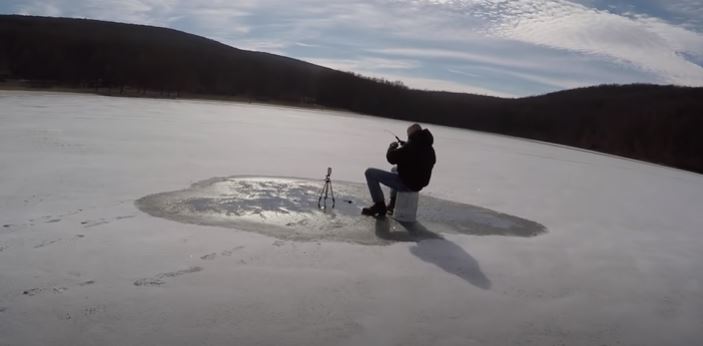
Once the holes are marked on the area, next with the help of a transducer they can locate the best spot for angling. After this, drilling of holes is required to start their angling although it works for them, however, the beginners are never advised to do so.
To get a clear picture of where fishes are schooling, anglers start marking a hole approximately every 75-100 feet. The key is to trace the fish and their prime locations. This trick works in both seasons, be it summer or winter. Keep moving and following the fish, you will never regret it. However, in summers you have boats to help you move around.
This drilling test hole is a fruitful strategy, as it saves your time later, when a hole is not productive. You can always switch to the next hole as you have quite many good options to jiggle.
Productive use of Transducers:
It’s a common practice to rely on the transducer’s cone angle for fish detection in a certain location. but do you know, it’s not actually how it works?
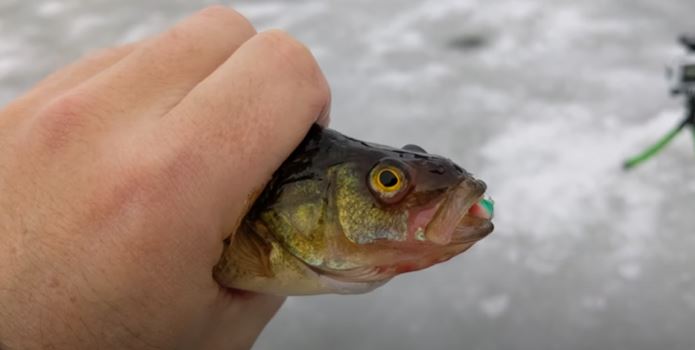
The key here is to twist your transducers a little when inserted in the ice. It increases the productivity and large water area coverage plus visibility also extends, so it can easily detect a group of fish. Now no one can stop you from catching those flashing fishes.
Live baits:
These are used in almost all cases, if you are dead sticking, using a bobber, or let’s say just jigging in a tip-up. Live baits can be used to hunt species such as panfish, suckers, and shiners. Because It’s not easy for even a picky fish to pass a live meal. They are always handy whether you are ice fishing or regular angling.
So don’t forget to keep a handful of wax worms with you on your next ice fishing trip. As we are heading towards the end of the article, I would certainly like to remind you of a few things again so don’t skip reading the key points.
Checklist for ice fishing:
>> Always do your homework by preparing a map of the lake structure. Highlight all the vegetation, underwater hills and humps, breaks, and points.
>> If you are looking for crappie and sunfish, they are likely to be found in shallow lakes whereas walleye and perch could be found at the bottom of the lake.
>> For an extended ice fishing year, in the early winters, choose smaller lakes because they ice up quicker. Afterward, you can move to potentially larger lakes as the oxygen supply there will keep fish in action. Plus, Fishes begin to move shallower in this time, so hunt for the fishes in the middle of the lake humps.
>> The experienced anglers always drill holes at different depths around their fishing area, they don’t wait for a fish for more than 15 minutes in a certain hole. They keep moving from hole to hole.
>> If fishes are visible and you are still not able to catch them use smaller jigs. when it comes to catching the bigger and furious fishes try your luck with larger lures at a foot from the bottom.
>> If the fishes are at the bottom and not in the mood to move, you need to reach the bottom, and To hit the bottom of the water always start with a Havier bait since they are heavy and will easily sink and make it to the depths.
Continue Reading
>> Fishing gadgets have taken a new loop nowadays. The techs are getting more advanced every day making it a child’s play. So we also need to upgrade our tech for a better experience and results, opt for a fish finder, transducer. It will save you plenty of time and hard work.
>> The best time to fish is with the sun weather rising time or going down. Morning hours are the best for catching fish. It’s their feeding time.
>> Always keep your fishes on ice after catching them to keep them fresh and safe. Since the germs cannot grow on ice the meat even stays supple and avoids drying out.
>> For beginners: Your easy target fish species can be trout, bluegill, bass, pike, and perch, as they are easy to catch. To make your fishing an adventure stick in the beginning, you must go for these fishing reels for better result.
>> Keep your baits or jigs steady in winters, as fishes are lethargic in winters they won’t waste their energy over a fast bait, they would pass it.
>> Cover your holes while ice fishing with some ice shaving so the light could not enter the water as it will scare the fish away.
>> Try to chum your hole by throwing in some wax worms or chopped minnows to attract the fish.
>> Bluegills and perch like to school in the bottom in the hard water. So to attract them throw in your bait to the bottom to stir up the mud and debris.
Conclusion:
Ice angling has its challenges but that does not mean you can’t overcome that, lots of patience and practice would make you a pro ice angler, the tip is to never give up and keep trying. invest your time in learning and sensing the best spots at the lake, by doing so, half your work is already done.
Always come well prepared and follow a systematic approach. Now no one can stop you from angling on hard water. so, take it easy and have fun. Good luck!
[acf field=”Schema”]
Hi, I am David. I have founded THE FISHER CAST because I believe everybody deserve to do fishing smartly. I with my team are here to make this possible for our present and future generations by giving the best hands on practical experiences and reviews.

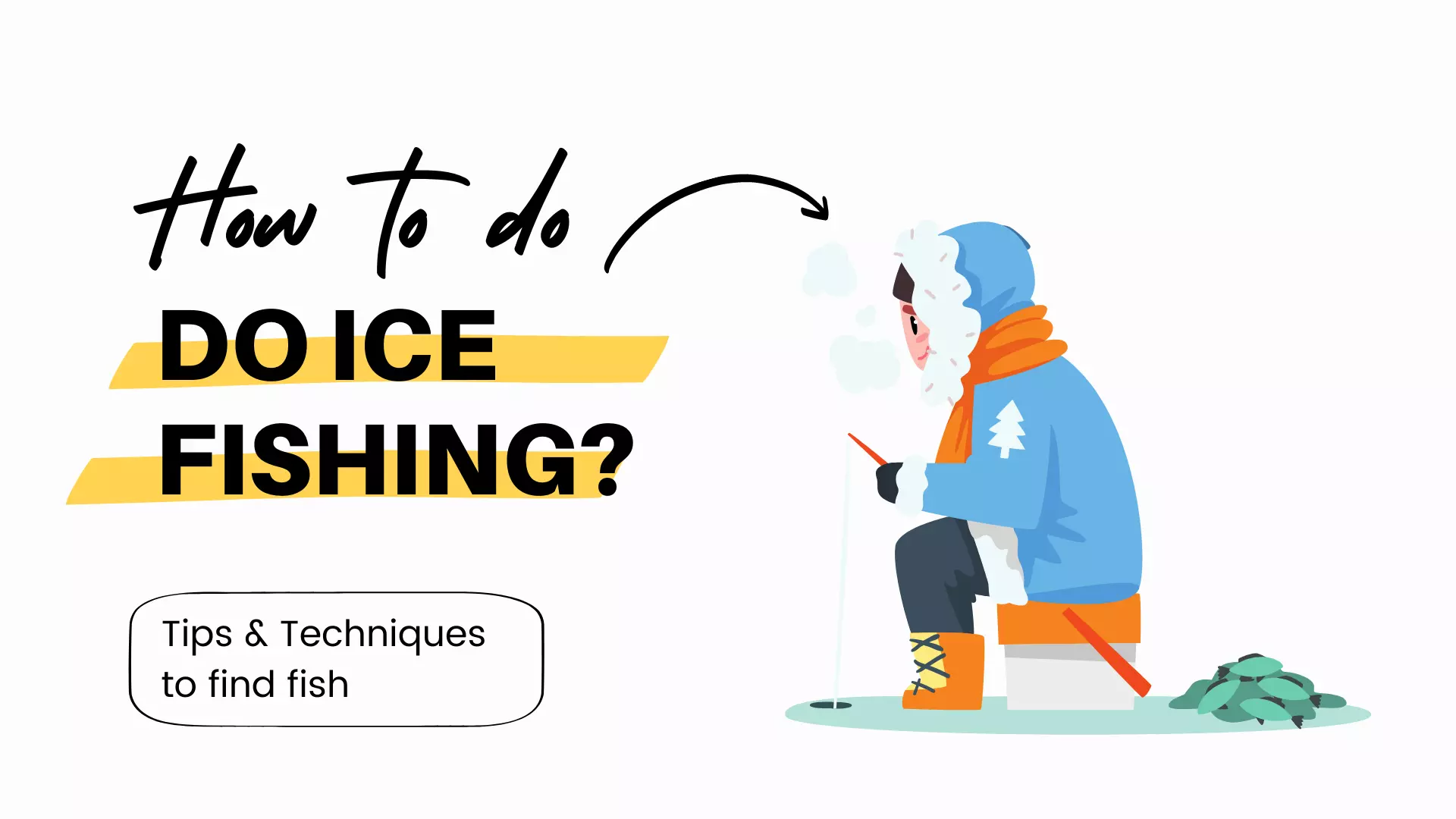
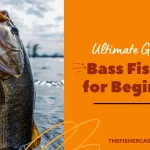
![10 Best Spinning Reels Under $100 [2023 Reviews] Best Spinning Reels Under 100](https://thefishercast.com/wp-content/uploads/2022/01/Best-Spinning-Reels-Under-100-150x150.webp)
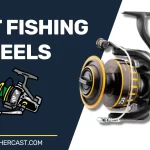

![10 Best Trout Spinning Reels [Reviews and Buying Guide 2023] Best Trout Spinning Reels](https://thefishercast.com/wp-content/uploads/2022/02/Best-Trout-Spinning-Reels-150x150.webp)
